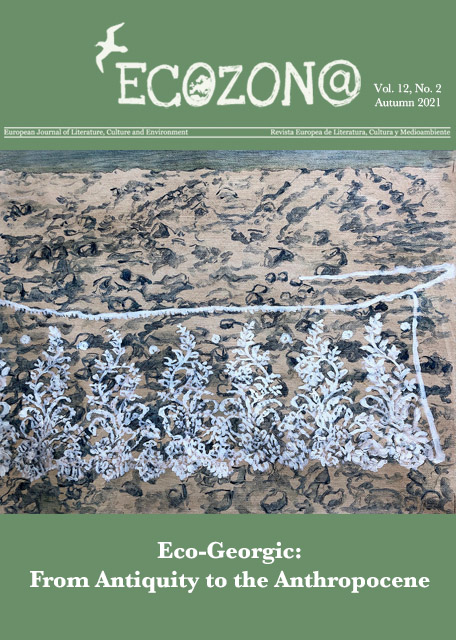Polar Bear in 'Fortitude'. Affective Aesthetics and Politics of Climate Change
DOI :
https://doi.org/10.37536/ECOZONA.2021.12.2.4391Mots-clés :
polar bear, global warming, affect, crime fiction, FortitudeRésumé
In the first season of TV Eco Noir crime series Fortitude (2015) the polar bear appears as a sticky object that embodies an ambiguous affective charge as an icon of global warming. This article discusses the ways in which the polar bear evokes viewer affect in the series through two discourses. The first one relates to violence, essentially present in crime narratives, and how the human and nonhuman animal are positioned in relation to global warming, violence and each other. It lifts up questions of place and belonging in a local and global context and detects how the polar bear is constructed in terms of stranger danger and victimization in relation to human animals and the threat of global warming. The second one targets the ways in which the polar bear is rendered sticky as the object of the human gaze and how this process of human animals looking at artistic bear photos both constructs and deconstructs the subject-object relation, hierarchy and agency. Methodologically, the article draws on “close looking” and the main theoretical starting points are ecocriticism and affect theory. The article argues that the representation of the polar bear contributes in essential ways to the socially and environmentally critical emphasis essential in contemporary crime narratives including Fortitude: the distracting and emotionally charged representation of the polar bear evokes ambiguous affective responses in viewers. Thus, as the article further argues, a representation of this kind is capable of—and liable to— inducing a higher consciousness of the present environmental crisis than a more straight-forward, less affectively charged representation.
Téléchargements
Téléchargements
Publié-e
Numéro
Rubrique
Licence
Authors who publish with this journal agree to the following terms:
a) Authors retain copyright and grant the journal right of first publication with the work simultaneously licensed under a Creative Commons Attribution License that allows others to share the work with an acknowledgement of the work's authorship and initial publication in this journal (CC BY-NC for articles and CC BY-NC-ND for creative work, unless author requests otherwise.
b) Authors are able to enter into separate, additional contractual arrangements for the non-exclusive distribution of the journal's published version of the work (e.g., post it to an institutional repository or publish it in a book), with an acknowledgement of its initial publication in this journal.
c) Authors are permitted and encouraged to post their work online (e.g., in institutional repositories or on their website) prior to and during the submission process, as it can lead to productive exchanges, as well as earlier and greater citation of published work (See The Effect of Open Access).










